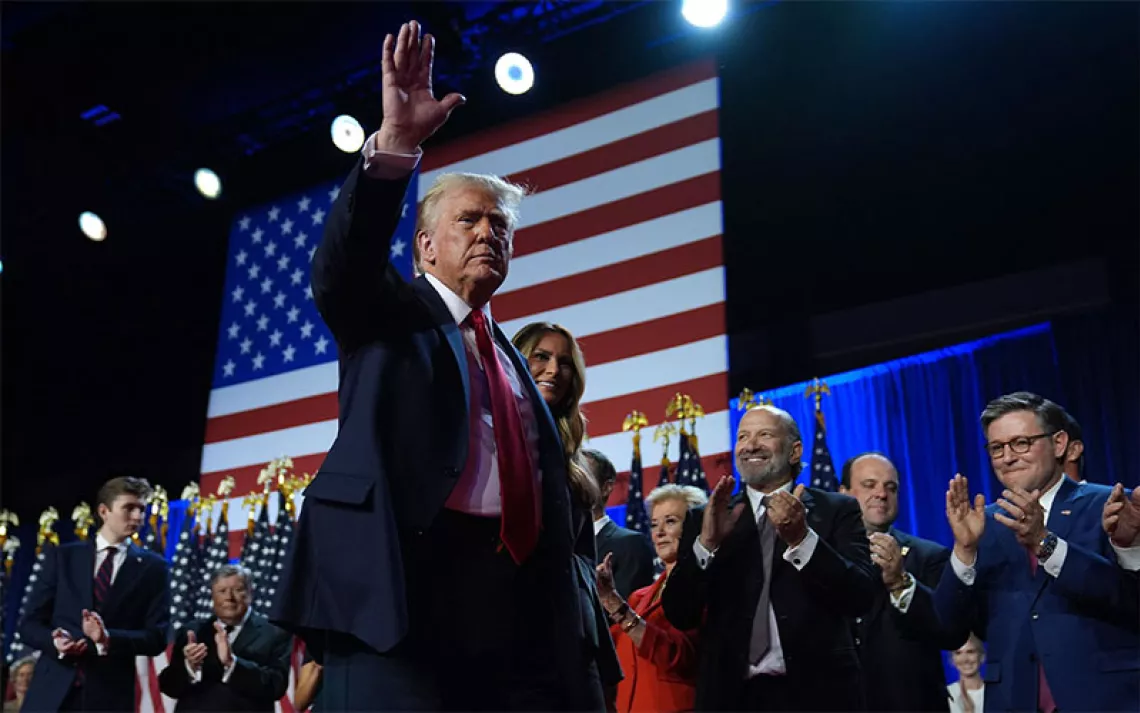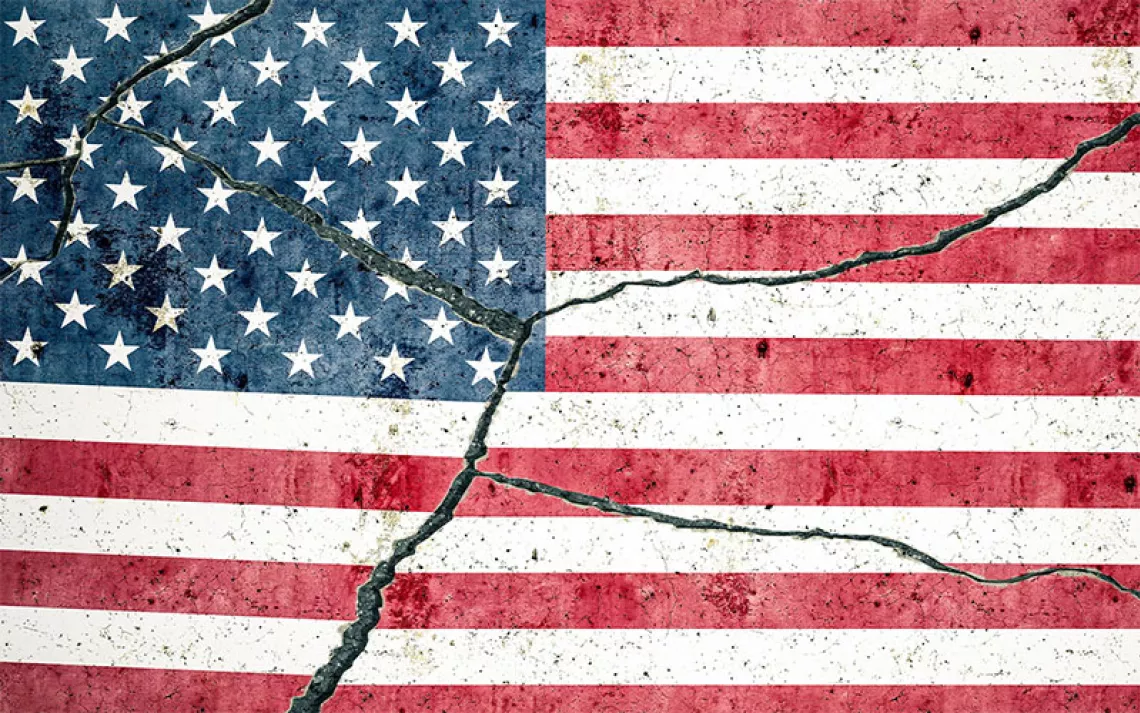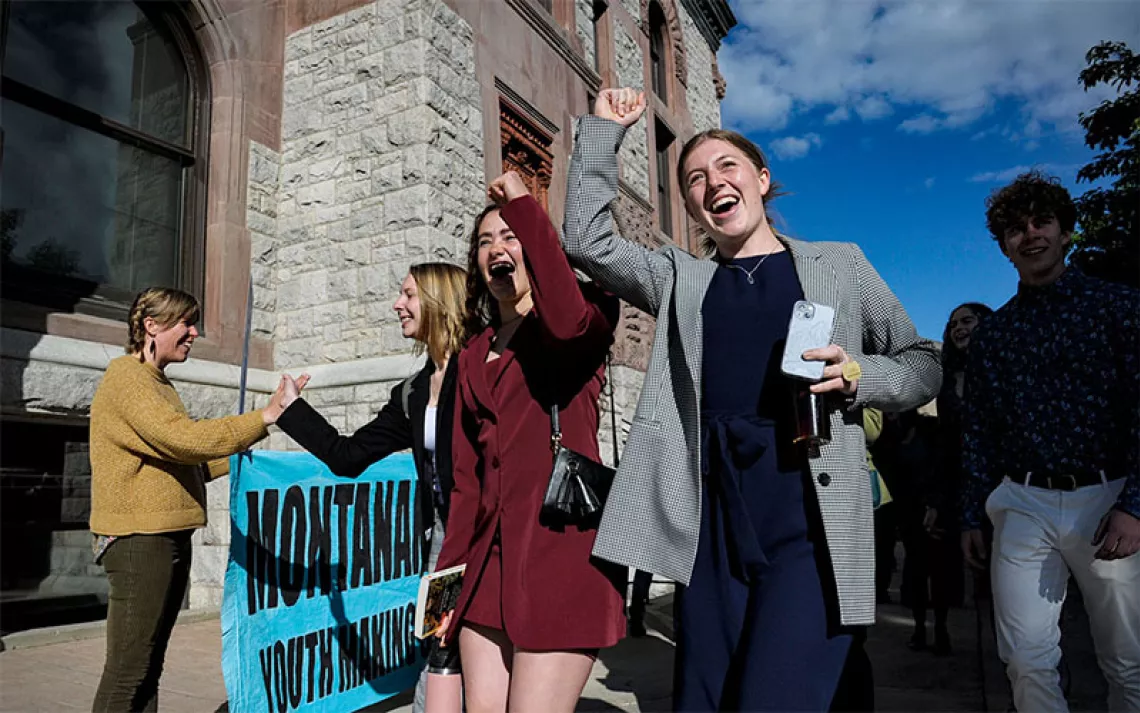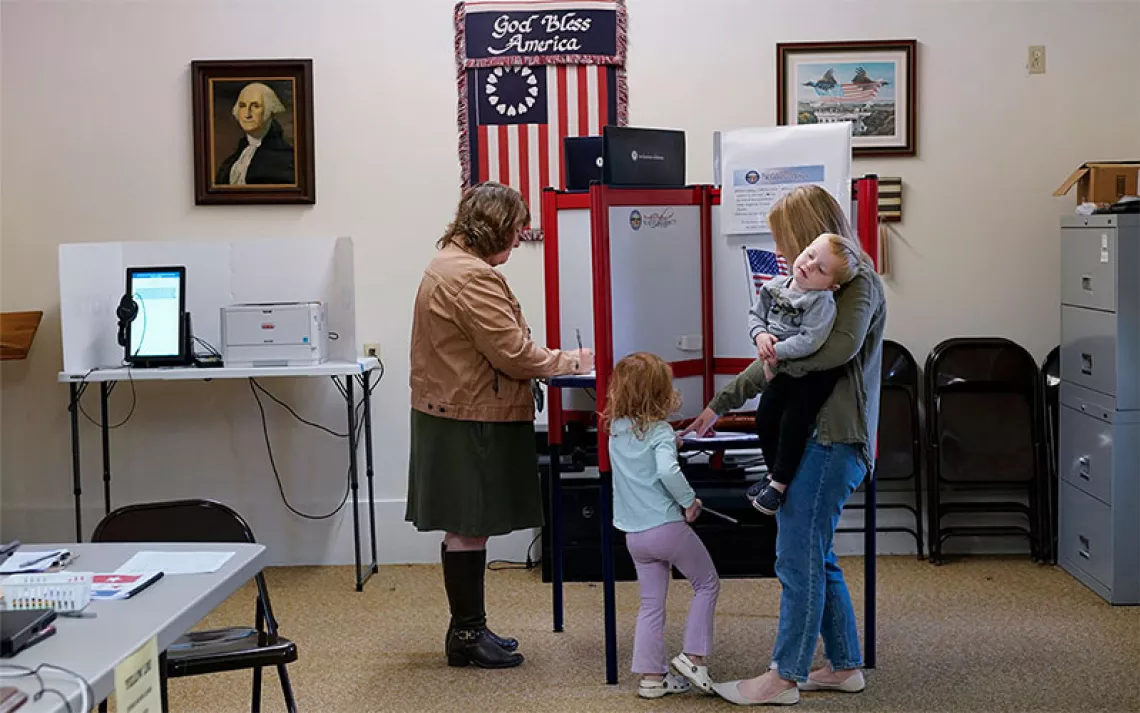What's the Point of Marching on Washington?
The history of protest in Washington, D.C., is a complicated one
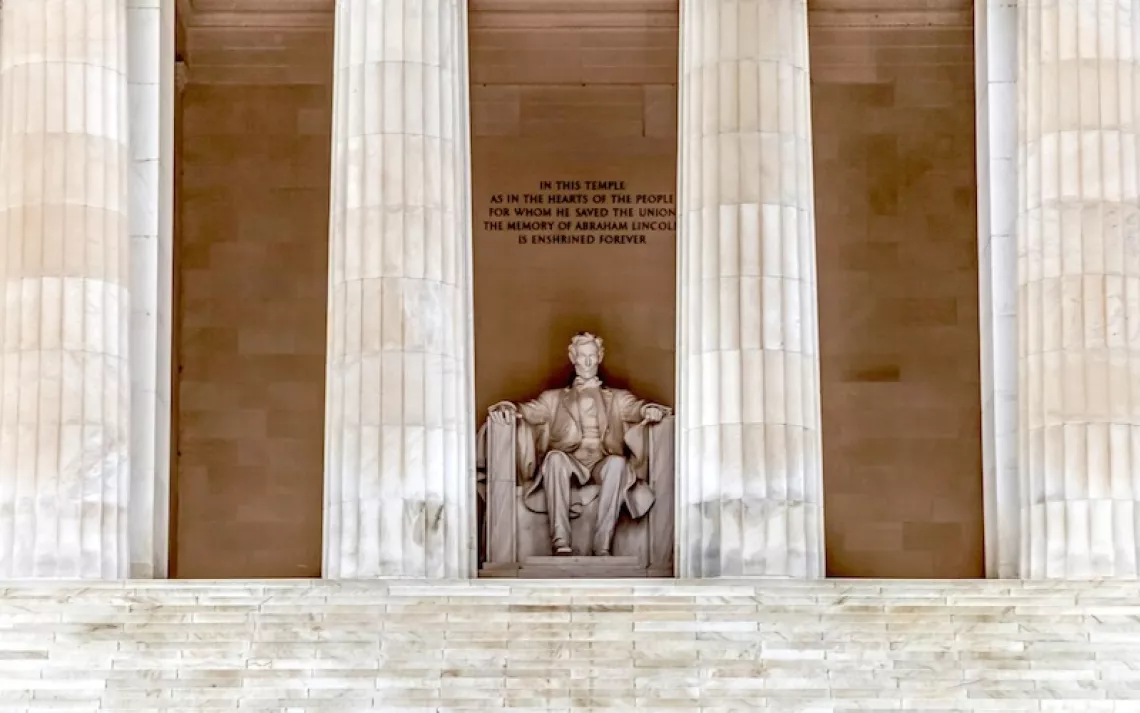
Photo by DK Fielding/iStock
The National Mall in Washington, D.C., feels like a place designed for protest, to the extent that it would be uncomfortable to do just about anything else there. The monuments and the spaces in between them are so huge that, without enough people around, they throw perspective out of whack. When I tried to walk to the Lincoln Memorial one summer as an intern in D.C., I squelched through the grass for a long time before Lincoln seemed to get a little bit closer. It felt like I was in one of those dreams where you travel intently in search of something but know that you’ll probably wake up before you actually get there.
I’d been raised, like a lot of people, on a history of the National Mall that is defined by the protests that happened there: Martin Luther King Jr. giving the “I Have a Dream” speech at the March on Washington for Jobs and Freedom, the AIDS Memorial Quilt. This year has been a busy one—the Women’s March, the March for Science, and now, the Peoples Climate March.
But the Mall wasn’t designed for spontaneous populism. It was designed to impress foreign dignitaries, at a time when the assumption was that nothing impressed a foreign dignitary more than a military parade. Those grand boulevards were meant to show off dudes in epaulettes to their best advantage. In the book Marching on Washington: The Forging of an American Political Tradition, historian Lucy G. Barber describes a capital constructed on the fantasies of sort of high-minded, intellectual space removed from the protests that were a regular part of life in cities like Philadelphia or New York. In 1882, Congress banned banners as well as “any oration or harangue” on the Capitol Grounds, adding a broad clause forbidding all actions that were “designed to bring into public notice any party, organization, or movement” just to be on the safe side.
Then, in 1893, America’s railroads—which had borrowed heavily in order to finance their expansion across the country—began to collapse. So did the banks that had invested in them—a move that, in the years before federally insured deposits, wiped out the savings of everyone holding money in those banks. The long-distance agricultural system that the railroads had made possible just a few years earlier broke down. Farmers couldn’t get their goods to market, and people in cities went hungry.
In 1894, newspapers began printing reports that hundreds of unemployed men had organized themselves into a group they called the "Commonweal of Christ” and were converging on the capital from all corners of the country. Their goal was to persuade the federal government to hire unemployed men to build a network of paved roads throughout the country as a way to ease the recession. Since many of them were actually walking to Washington, they were calling the march “a petition of boots.”
The feds thought this was a terrible idea. “It is quite possible,” Senator Joseph Hawley warned, “that it may become a habit to make pilgrimages annually to Washington and endeavor to dominate Congress by the physical presence of the people.” The District of Columbia Militia began practicing drills to attack the marchers, and the Department of the Treasury sent undercover Secret Service agents to infiltrate the group. The 1882 law had never been enforced, so the Capitol Police made a big show of rerouting a baffled Odd Fellows parade away from the Capitol Grounds in order to establish a precedent for keeping the marchers away.
Meanwhile, the marchers—which newspapers named “Coxey’s Army” after Jacob Coxey, one of the organizers—were trying to craft an image that would impress Washington. When they passed through cities, they lined up in rows and marched in formation, drifting back into an amorphous crowd once they’d exited city limits. The group only allowed women to join the march as wives and refused to accept immigrants at all.
All this image-crafting failed to impress the police. Shortly after the marchers arrived in Washington on May 1, Carl Browne, one of the group’s leaders, was clubbed and arrested for trying to make a speech on the Capitol steps. When Coxey showed up for Browne’s bail hearing, he was arrested, too, and both were charged with wearing political lapel pins (a fairly ambitious interpretation of the “no banners” section of the 1882 rule) and walking on the grass.
While Coxey and Browne prepared for their upcoming trial, the rest of the group, which had set up camp on the bluffs of the Potomac River, tried to keep up appearances and maintain political pressure—a task complicated by the fact that some marchers were so hungry that they were begging door-to-door, and a recent strike by employees of the Pullman Car Company in Chicago became so fierce that it sucked media and political attention away from everything else. Coxey was embittered by the experience—when he got out of jail on June 11, he announced that he was leaving for Ohio to run for Congress. By mid-August, the last 165 members of the march had abandoned the camp on the Potomac after the governor of Maryland threatened to arrest them and put them into a workhouse.
So, seen one way, the first march on Washington was a complete failure. Seen another way, it planted a seed in American culture that took decades to bloom. By the time a group of suffragettes were planning the next major D.C. demonstration in 1913, the Chief of Police was outmaneuvered when he tried to stop the marchers from getting permits to walk down Pennsylvania Avenue. The never-very-accurate fantasy of Washington as a Versailles-like refuge for politicians to ponder governance in splendid isolation dissolved into something more like the town square for an entire fractious country. By 1925, railroads were advertising “Washington: The Place of Pilgrimage for Patriotic Americans.”
Coxey was not alone in his disillusionment, though. Alice Paul, one of the prime movers behind the suffragette march, turned more aggressive tactics like picketing and direct confrontation after the march failed to deliver any progress toward a federal amendment that would give women the right to vote. The March on Washington for Jobs and Freedom is probably the most famous march in U.S. history, but the year after it was over, one of its main organizers, Bayard Rustin, wrote an article arguing that it was time to abandon protest in favor of compromise and mainstream politics.
Martin Luther King Jr. wondered if the problem was that the march had not been aggressive enough. Before his murder, he was planning the Poor People’s Campaign—a protest of just 3,000 experienced activists instead of 10,000 novices, who would build shantytowns in Washington, D.C., and call attention to the problem of poverty through sit-ins and blockades.
Today, protesting in Washington can be a well-oiled machine that produces a dubious product. The phenomenon that Alice Paul noted back in 1913—that each march has to somehow raise the ante to attract the attention of the previous one—remains true. A march can be timely and visually compelling and still receive almost no media coverage. Advances in technology—particularly in the realm of social media—have made it possible to pull together large groups of people in public spaces without the civic and organizational knowledge experience to know what to do with these newfound alliances.
When I think about what protest today means and where it is going, I keep returning to the work of Zeynep Tufecki, an academic who studies technology and political movements. In her analysis, the massive protests of the past were the culmination of years of planning and compromise and strategy, while today, movements can coalesce and disperse like birds in flight. Comparing them to the protests of today is unfair to both eras. Instead, modern protests are often the beginning of a movement—the first step toward something new. The hard work of political change still has to happen, no matter how it’s punctuated, but the process itself continues to mutate. America keeps changing, and so does the way that Americans try to change the country’s direction.
 The Magazine of The Sierra Club
The Magazine of The Sierra Club
